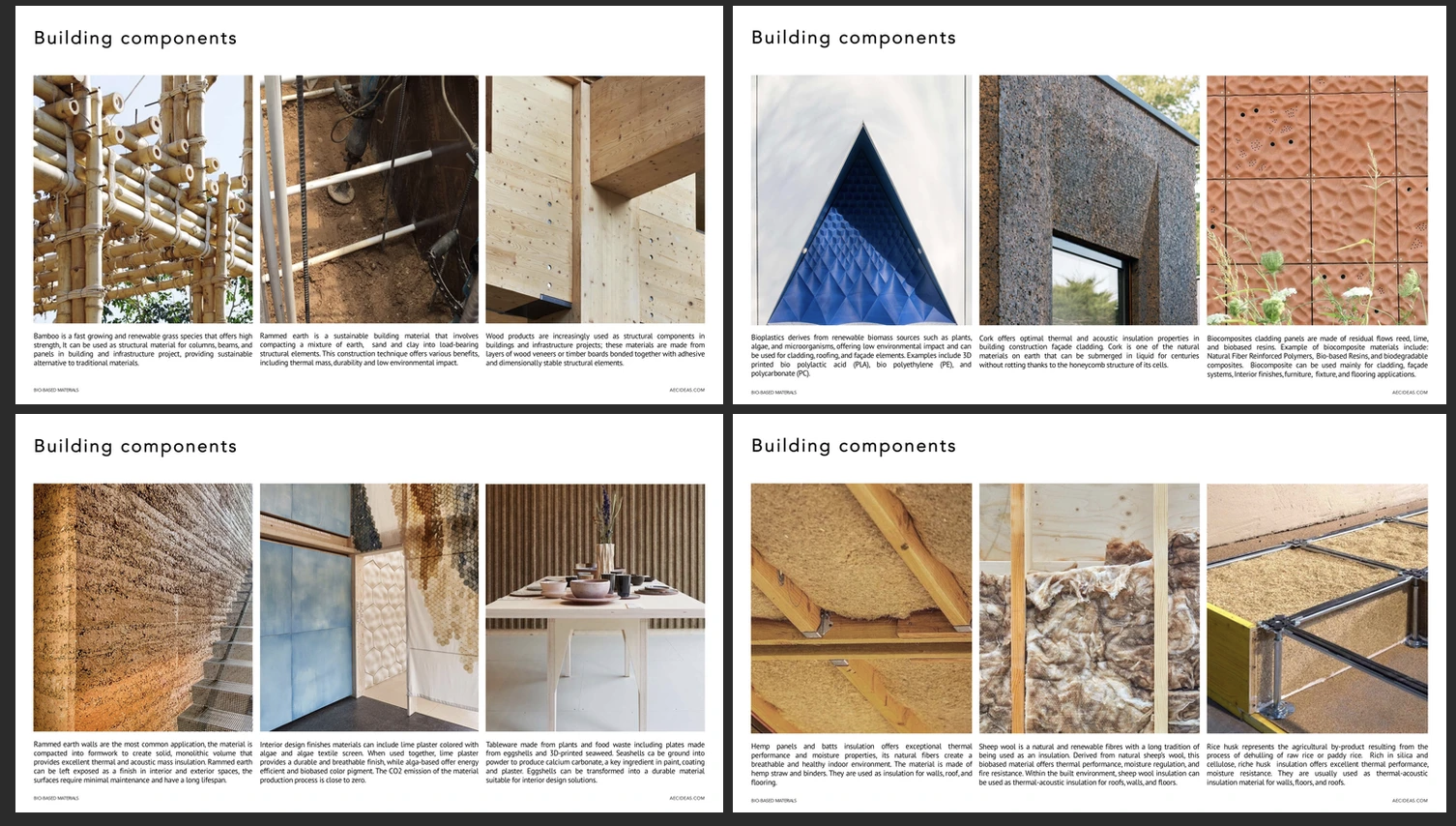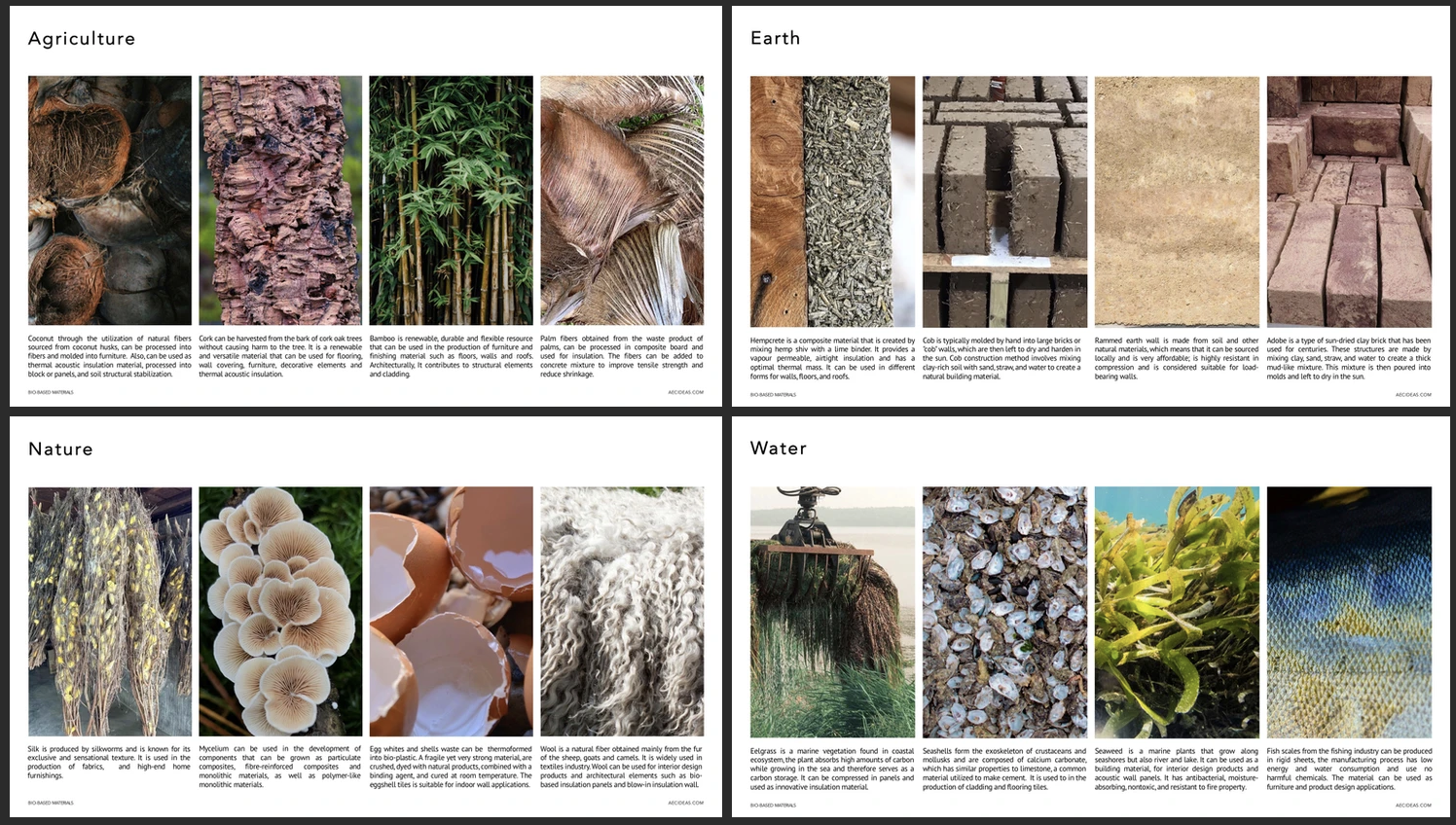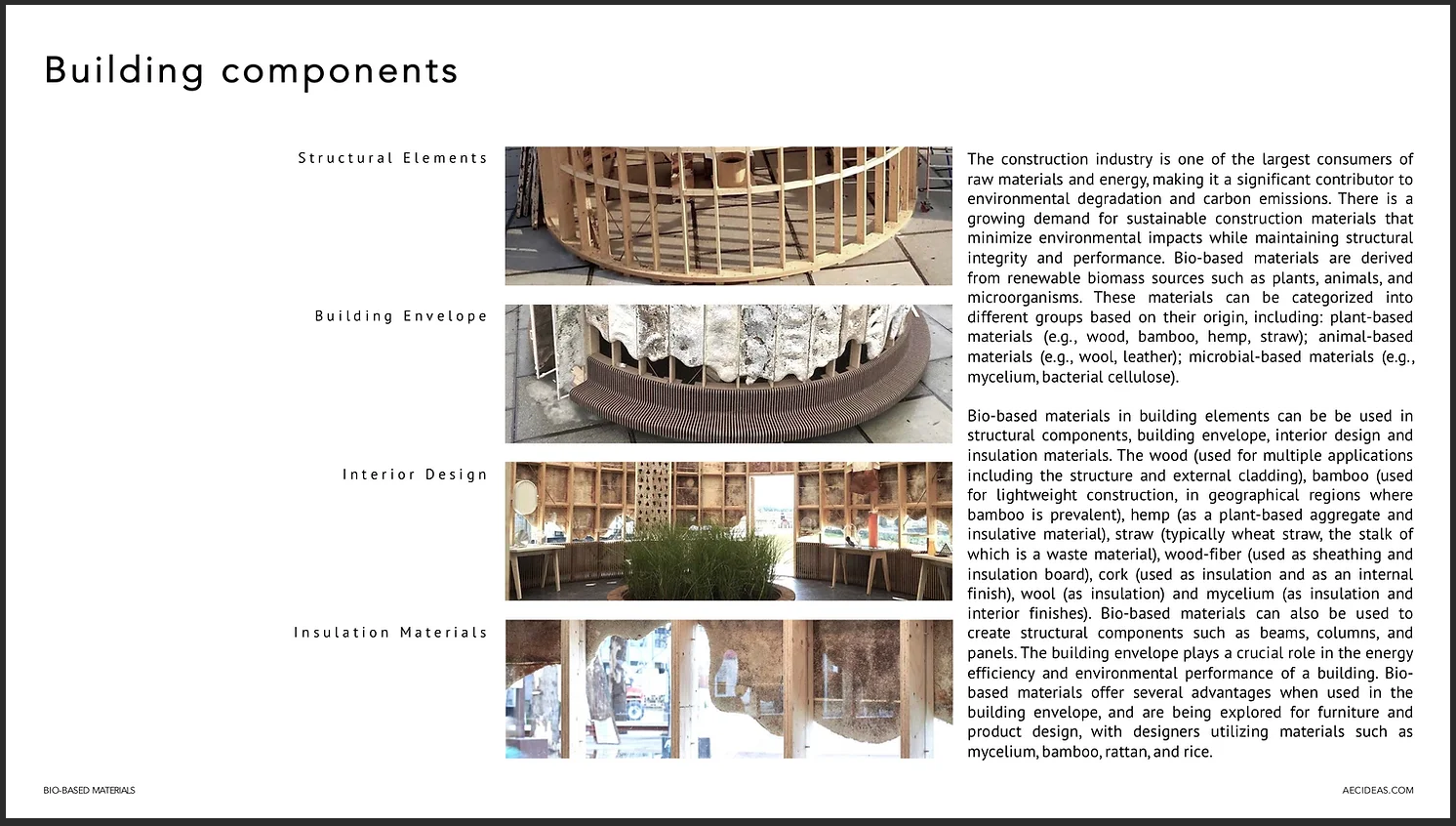The future of Bio-Based Materials in Architecture and Design

This is a summary of an article by ICA co-founder architect Alessandro Mangano. Read the full article here >
Revolutionizing the Construction Industry
Bio-based materials, sourced from agriculture, nature, earth, and water, are transforming the construction industry. These materials offer sustainable alternatives to traditional options, minimizing environmental impact without compromising performance. The built environment significantly influences our daily lives, and the materials used in construction have profound implications for both the planet and its inhabitants. With growing concerns about climate change and resource scarcity, there is an urgent need to rethink traditional paradigms and embrace more sustainable alternatives.

Sustainable Alternatives
From biopolymers to façades made of mycelium panels, the possibilities are exciting. These materials are transforming the industry, offering sustainable alternatives to traditional options. Bioplastics, sourced from agricultural resources like corn or sugarcane, are finding applications in insulation, roofing, and cladding. They are effective in reducing reliance on fossil fuels, mitigating environmental impact, and offering durability comparable to traditional materials. Natural finishes and coatings, such as clay and lime sourced from the earth, contribute to healthier indoor environments with low VOC emissions.
Environmental and Health Benefits
Bio-based materials significantly reduce reliance on finite resources and help mitigate environmental impact. By utilizing renewable resources such as bamboo, straw, and hemp, these materials contribute to a more sustainable built environment. Unlike traditional construction materials like concrete and steel, which have high carbon footprints, bio-based materials have lower embodied energy and carbon emissions, making them a more environmentally friendly choice. They also contribute to improved indoor air quality by being natural and non-toxic, unlike many traditional construction materials that release volatile organic compounds (VOCs) and other harmful chemicals into the air.

Energy Efficiency and Biophilic Design
Bio-based materials play a crucial role in improving the energy efficiency of buildings. Materials like cork, cellulose, and wool offer excellent thermal performance, reducing the need for heating and cooling. By providing better insulation, these materials help lower energy consumption, resulting in reduced utility bills and lower carbon emissions. Bio-based materials often have natural textures and colors, promoting biophilic design principles, which aim to connect occupants with nature, leading to improved well-being and productivity. Additionally, bio-based materials have the unique ability to store carbon, helping to reduce the carbon footprint of buildings.
Advantages and Challenges
In the context of the construction industry, bio-based materials offer several benefits over conventional ones:
- They are renewable and can be sustainably produced long-term.
- They can naturally absorb carbon from the atmosphere during cultivation, contributing to climate change mitigation.
- They promise performance gains in terms of moisture absorption and breathability.
- They are generally less harmful to people and the natural environment in terms of pollutant emissions.
- They can be disposed of more easily and sustainably at their end of life.
However, bio-based products can be more expensive than their traditional counterparts, partly due to the lack of economies of scale in their manufacture. To drive prices down, there is a clear need to foster demand and upscale production capacity.
Future Prospects
As research and development continue to advance, the future of sustainable architecture looks inspiring, with bio-based materials leading the way toward a better and more resilient world.
Please contact us to start a conversation about how our consulting services can support you.
For more information about the publication: Bio-Based Materials in Architecture and Design, please reach us at: aec@aecideas.com

